For the four hour challenge, I decided to document the legendary wait at a local restaurant. Since I worked with video professionally, I wanted to give amateur food blogging a try with this challenge. Originally posted here.
Yume Wo Katare at Porter Square opened its doors last October after much chatter and anticipation. Word of legendary waits spread like so many Ippudo outposts. Having endured long lines at the ramen temples of New York City, I’ve witnessed the fanaticism inspired by this superlative form of noodle soup. But here in Cambridge, could a bowl of ramen really be worthy of lines that snake around the block on even the snowiest and coldest of nights?
According to reviews, people endure those lines at Yume not just for the noodles, but for the experience. In the words of one Yelper:

And so I gathered up some hungry troops hearty enough to brave a potentially hour-long wait in a wintry mix. When we arrived at 6:35pm, almost twenty people were already waiting outside.
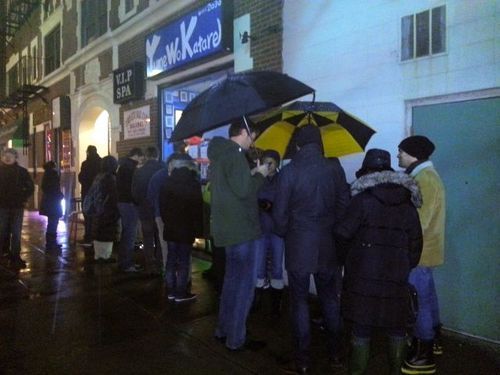
We studied the rules, helpfully posted on the window in a handy flow chart:
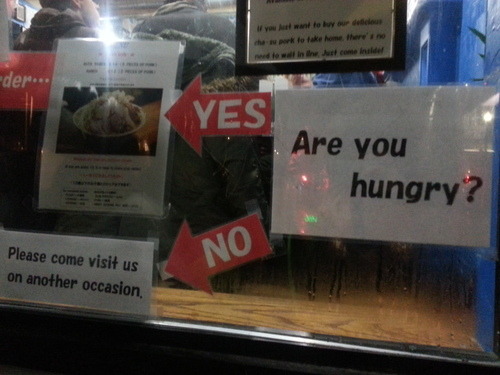

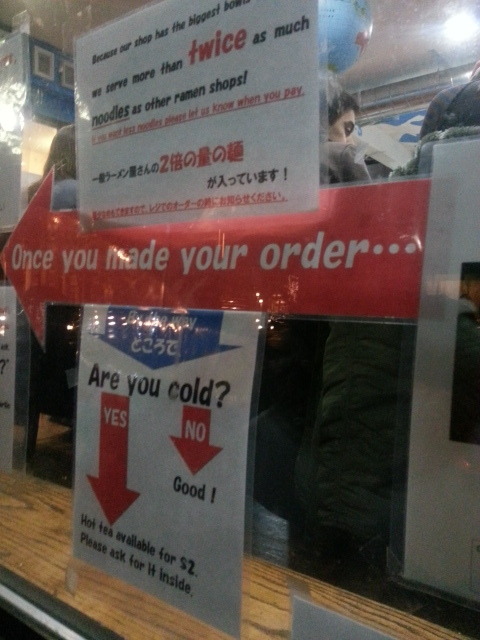
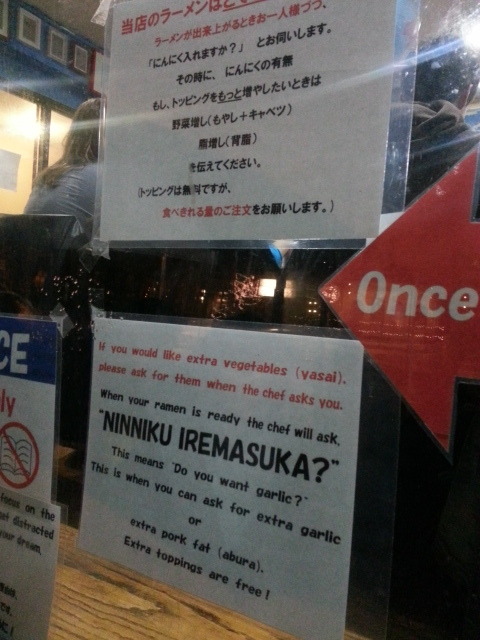
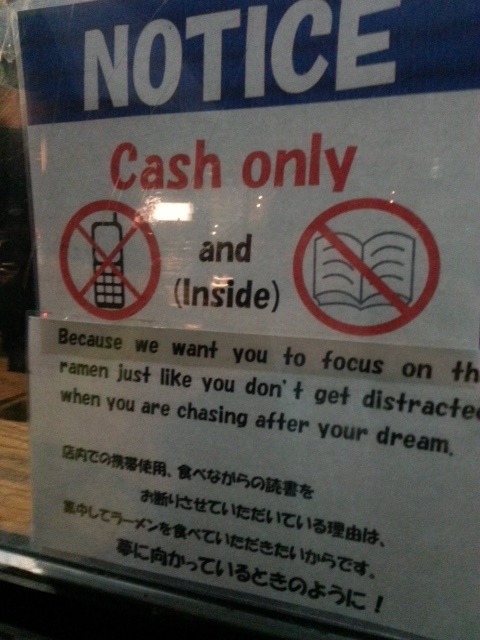
The restaurant sits a strange half-story above street level, placing tables at eye level for those looking on covetously from the outside.
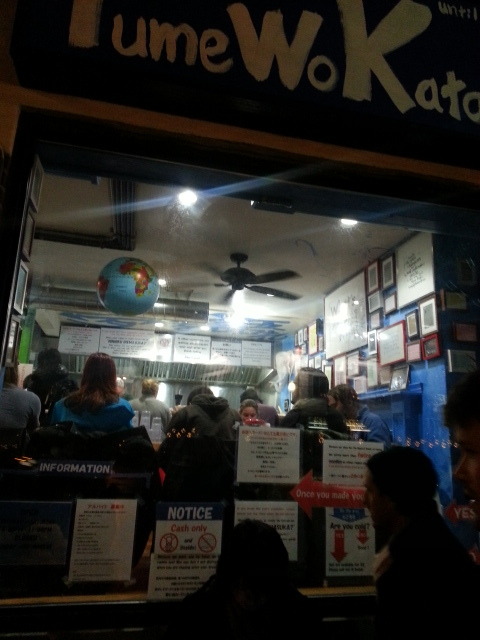
And if all that isn’t enough to build up the anticipation, the front of the line is marked by this sign:
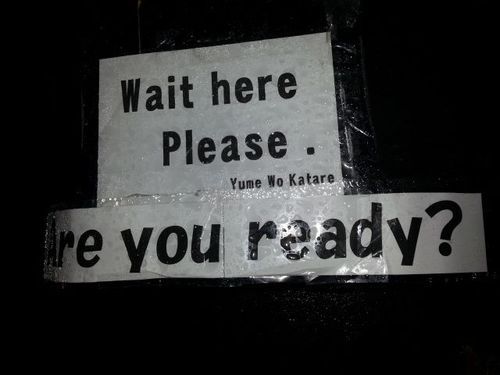
45 minutes later, we were finally in– but alas, the wait continued as we were made to stand against the walls, hovering over the other patrons.
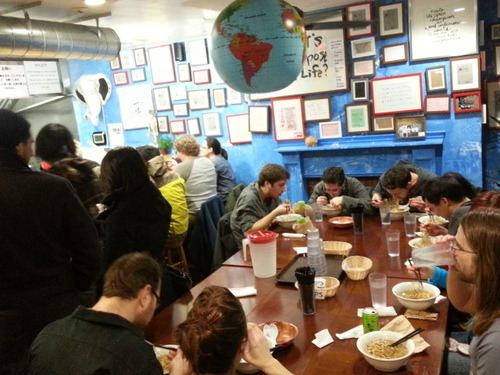
I expected a museum-like aura in a place with such rigid rules, but the experience inside belied my impression. The hostess was kind, and while a few of the twenty or so patrons ate silently, there was a soft din of conversation over the sound of light jazz playing in the background.
The name of the restaurant means “tell your dreams,” a dictum that was painted on the ceiling above the kitchen
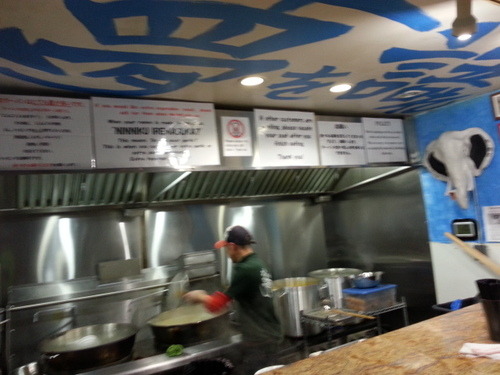
..and displayed on the far wall.
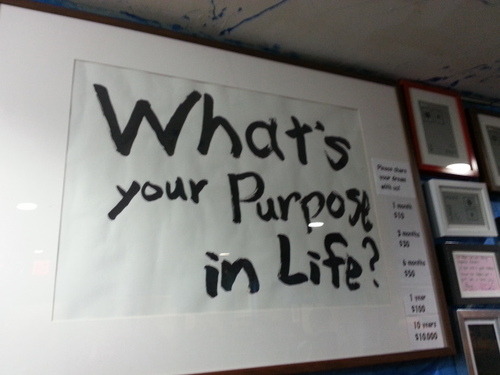
Visitors can purchase a spot on the wall for a framed declaration of their dreams at a cost of $10 a month, or $10,000 for 10 years– a long term investment of dubious returns.
In Japan, ramen styles vary greatly according to different regional conventions.
<
View The 26 Types of Ramen in Japan in a larger map
Yume serves theirs Jiro-style: in big heaping bowl (“the biggest bowls in Boston,” according to one of their many signs) of pork and soy-based broth, topped simply with thick noodles made in-house, slices of roasted pork belly, bean sprouts, cabbage and minced garlic, sans condiments.
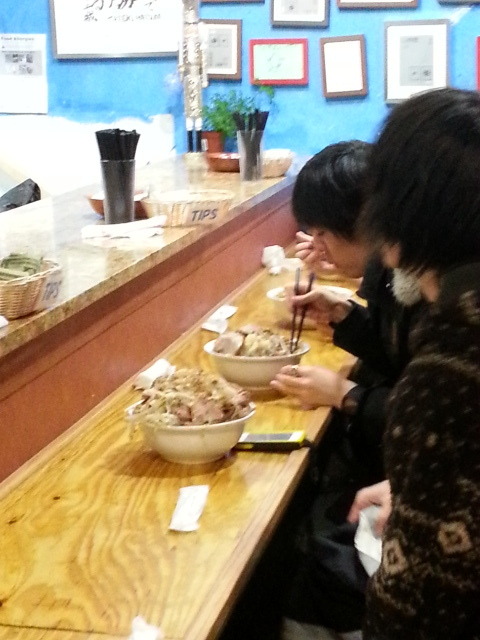
A bowl with two slices of pork rings in at $12, a five-slice bowl at $14. Extra vegetable toppings are free of charge, though one sign requests that patrons order only so much as they can eat, as leftovers cannot be taken to go.
After the ten minute standing wait, we were finally seated. Chef/owner Tsuyoshi Nishioka called out to us one by one with his trademark demand:
To which we responded with requests for extra veggies or garlic. Our bowls arrived, as full and heaping as had been described in so many reviews.

The first few bites were delightfully porcine and just fatty enough to trigger my Pavolovian responses. The noodles, thick as linguine, were cooked to a toothsome al dente and carried the savory soy flavor of the broth. The real trouble, however, lurked below the toppings: bits of melty pork fat flecked the gravy-like broth.
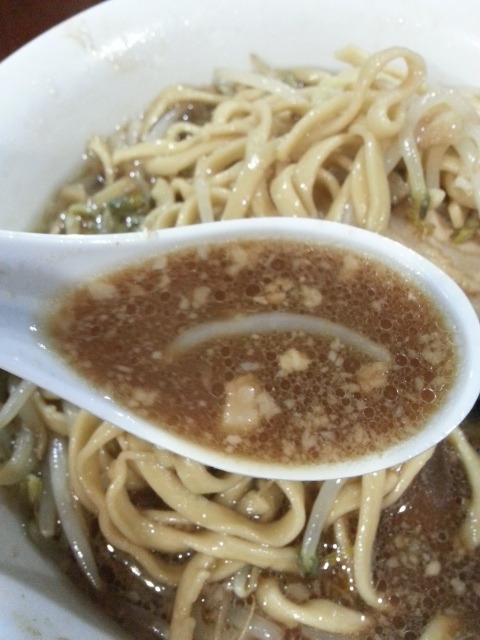
I suppressed a looming fear for my arteries and managed to finish all the solid components, though not the soup. My companions did no better.
It was a gratifying meal for a cold night, but Nishioka’s fine handiwork wasn’t enough to absorb my full attention. Bite after bite, I remained awkwardly aware of the waiting glances of those standing behind me and outside the window. Next time, I’ll most likely tell my dreams elsewhere.
















